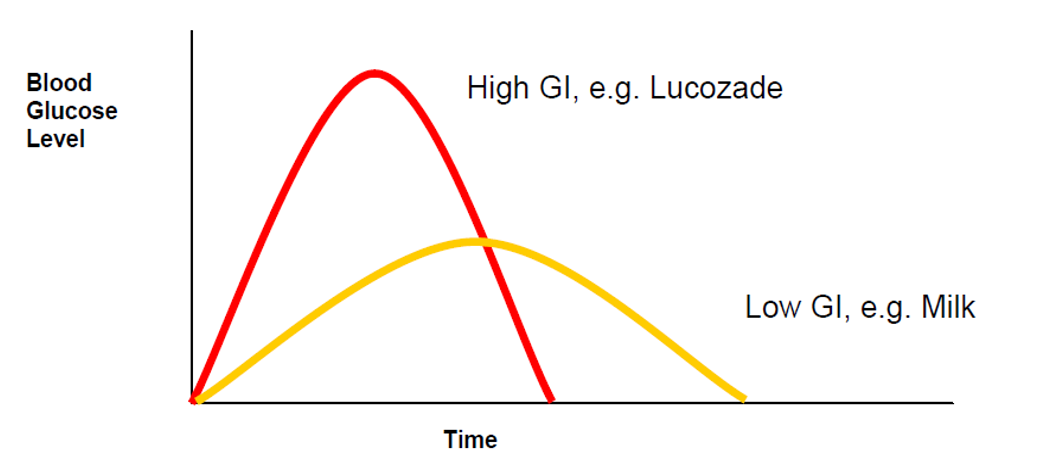Download PDF, 888KB, PDF
Carbohydrates
Food and drinks provide your body with energy in the form of carbohydrates, protein and fat. Carbohydrates are your body’s preferred source of energy. Carbohydrates are digested and broken down into glucose, which is then carried to your body’s cells through the bloodstream.
Glycaemic Index (GI)
The Glycaemic Index (GI) is a way of ranking foods containing carbohydrates based on how quickly and how much they raise blood glucose levels after being consumed (from 0 to 100).
- Low GI foods produce a slower, lower rise in blood glucose levels.
- High GI foods produce a faster, higher rise in blood glucose levels.

Low GI foods have a GI of less than 55
High GI foods have a GI greater than 70
Eating too much high GI foods causes repeated spikes in your blood glucose levels. On the other hand, low GI foods cause your blood glucose levels to rise and fall slowly, and may help you feel full longer.
| Foods Containing Carbohydrates |
Lower GI |
Higher GI |
| Bread | Wholemeal bread, multigrain bread | White bread |
| Breakfast Cereals | Rolled oats, muesli, oat bran | Instant oats, puffed rice, cornflakes, bagels |
| Rice/Grains | Brown rice, basmati rice, wholemeal pasta, brown rice vermicelli | Jasmine rice, instant noodles, yellow noodles |
| Snacks | Wholemeal crackers, plain popcorn, plain corn chips | Plain crackers, soft drinks, rice cakes |
| Fruits | Grapefruit, peach,
apple, pear, plum, orange, grapes, cherries | Watermelon, lychee, pineapple |
Some low GI foods (e.g. wholegrains, fruits, vegetables, beans and lentils) are foods that we should eat as part of a healthy and balanced diet. However, GI is not a reflection of how healthy a food is.
Factors Affecting Glycaemic Index (GI)
- The type of sugar present – both fructose (fruit sugar) and lactose (milk sugar) have a lower GI than sucrose (table sugar).
- The amount of soluble fibre (type of fibre that absorbs water to form gel-like material) – the more soluble fibre a food has, the lower the GI.
- The ripeness of a fruit – the riper a fruit, the higher the GI.
- Cooking and processing can increase the GI of a food as less work is required by the body to digest the carbohydrates (e.g. fruit juice has higher GI than whole fruit).
- Adding acidity (e.g. adding lemon juice/vinegar to salads) can lower the GI of the meal.
- Consuming fat and protein with carbohydrates can lower the GI of the meal.
- After cooking, waiting for the carbohydrates (e.g. rice or potato) to cool before consuming it can lower the GI.
